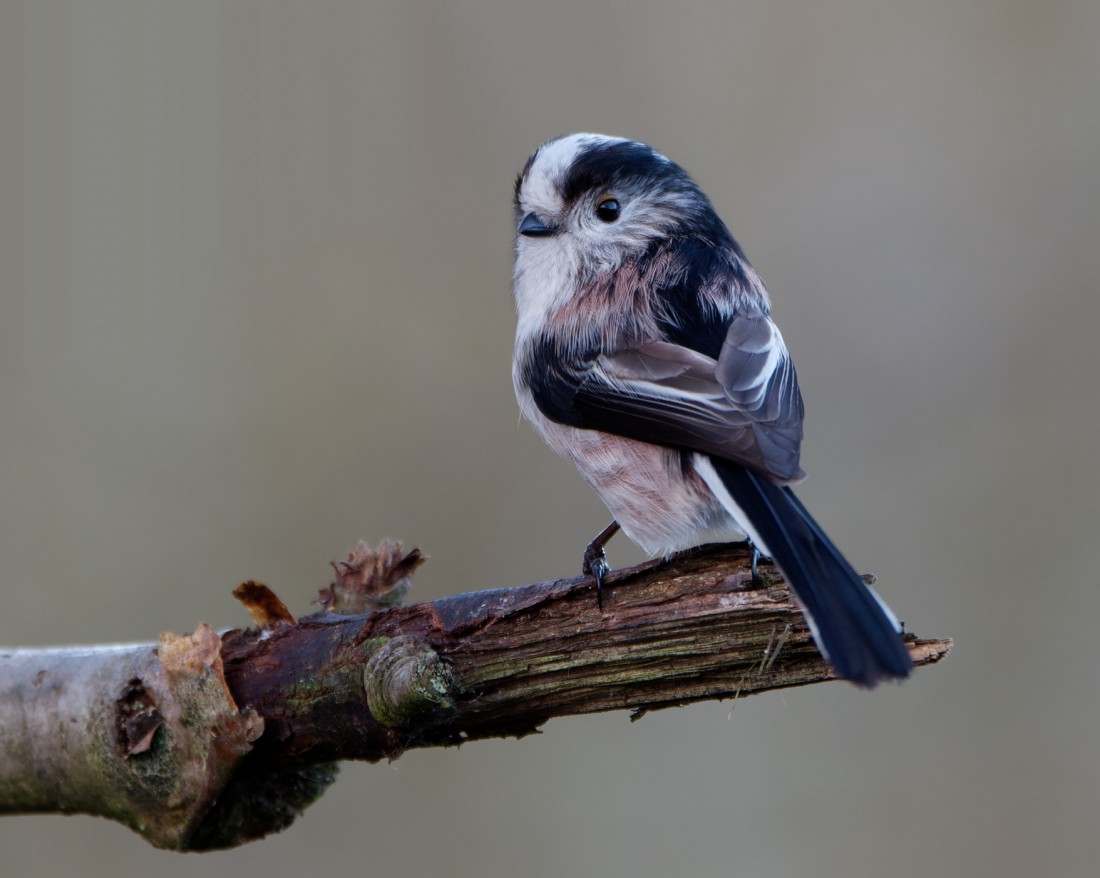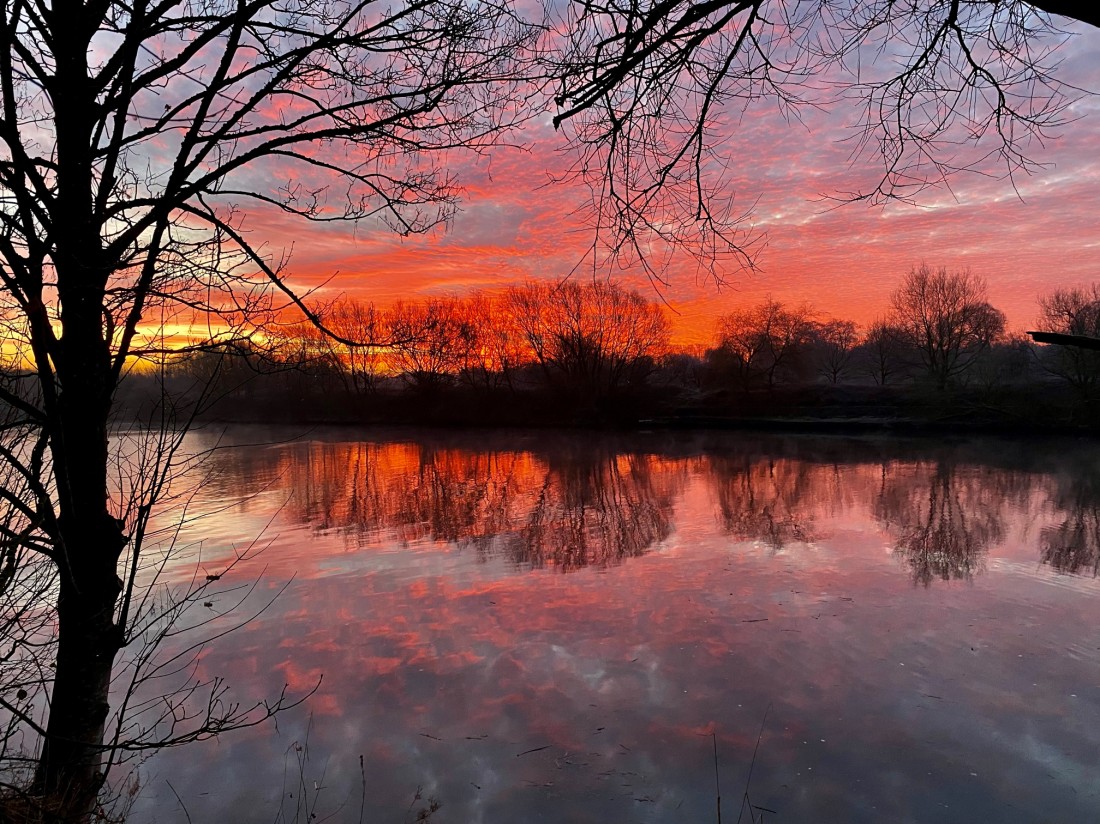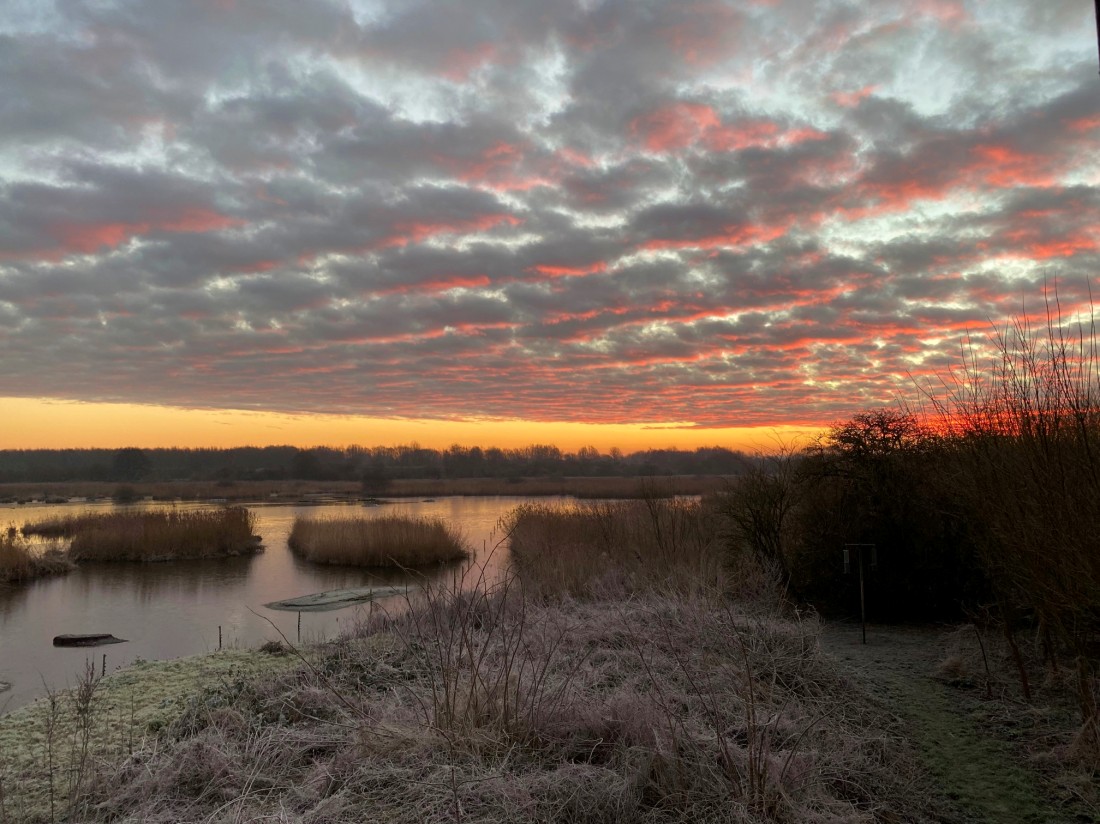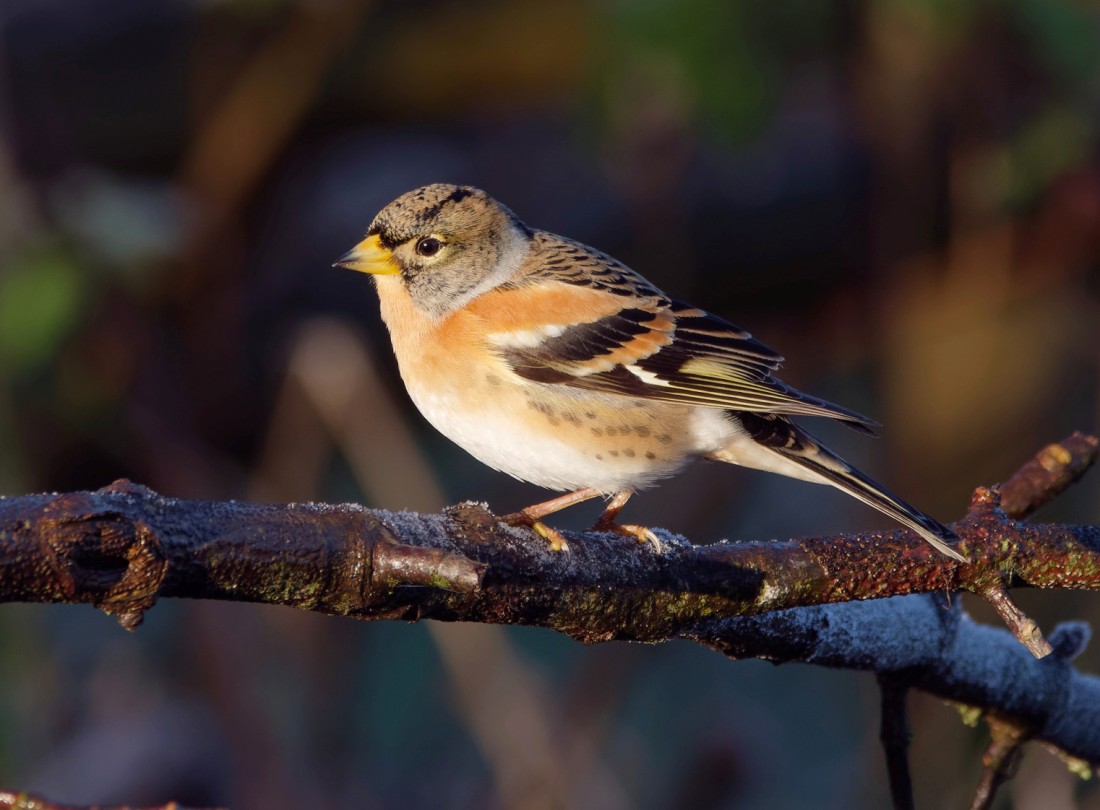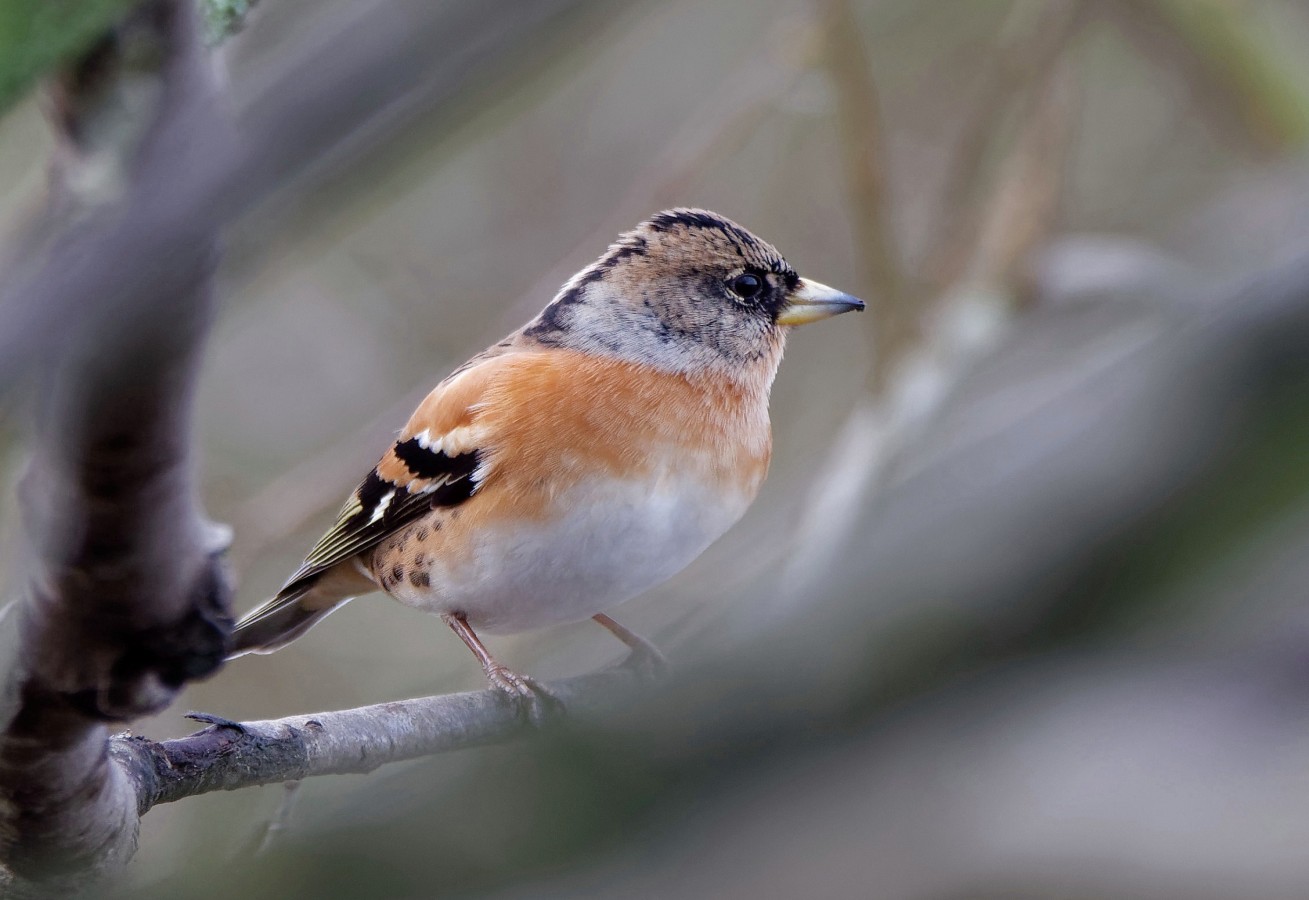Woolston Eyes Monthly Sightings
2022-01-29
It was a blustery morning at Woolston Eyes, as Storm Malik hit the coast of Scotland, with squalls passing through before the skies eventually cleared. There were far fewer Bramblings around the No.3 bed feeding stations than recently, though it is hard to know yet whether they were being kept away by the conditions, rather than having departed en masse. By lunchtime, just 20 were under the Morgan Hide feeders, with a few more a around the bed. Water-birds were much more in evidence with totals from both No.3 and No.4 bed including: 1 Jack Snipe (with 4 more reported from No.1 bed), 7 Common Snipe, 500 Lapwings, 375 Black-headed Gulls, 90 Shoveler, 100 Gadwall, 450 Teal, 14 Shelduck, 35 Mallard, 10 Pochard, 45 Coot and 70 Tufted Ducks. The link is to a short video showing Gadwalls, Teal, Bramblings, Pintails and a Grey Wagtail.
To wtach David’s video CLICK HERE… or cut and paste the following link into your browser.
https://youtu.be/qcf5x3adPl8
Cheers David Bowman (with Helen Wynn, Dave Steel, Sue Haddock and Brian Baird
Submitted by: David Bowman
2022-01-27
Some additional records for today; reserve totals of 843 Tufted Duck, 40 Pochard, 86 Gadwall, 94 Canada Geese and 18 Shelduck. A Peregrine was on the viaduct and a total of 260 Lapwing included 200 on one of the new islands on the No.4 wetland. A third male Pintail was on the loop of No.4 bed.
Submitted by: Dave Hackett
2022-01-27
The warmish sun allied to a cool breeze made for nice walking weather today. Highlights from No.3 bed included a female Marsh Harrier, a pair of Kingfishers on the Oxbow, at least 70 Bramblings around the North Meadow, plus 2 drake Pintails, 200 Teal, 55 Shoveler and 13 Shelducks out on the water. Then it was a stroll around No.4 bed, checking on progress with the new wetland, which is only a few months away from completion. There were plenty of Teal, Gadwall, Mallard and Coot, along with a few each of Pochard, Tufted Duck and Shelduck. In addition, 300 gulls were roosting around the new breeding islands, with 220 Black-headed, 61 Herring, 15 Lesser Black-backed, 3 Great Black-backed and 2 Common. We’re hopeful that at least a few of the Black-headed Gulls will stay to breed on the bed, as Black-necked Grebes are attracted to breed within the protection from predators which a colony of these small gulls provides. Photo of a Long-tailed Tit Cheers David Bowman
Submitted by: David Bowman
2022-01-20
A glorious winter’s day for my first walk around the whole reserve this year. Although most of the waters were frozen there were small areas of open water on No.3 bed where good numbers of wildfowl had congregated including a minimum of 75 shoveler. Signs of spring included greenfinch in song and little grebes trilling. The highlight of the day was an excellent reserve-wide count of 730 tufted duck which I believe is the highest of the winter so far. 17 pochard were present and a goldeneye was on the river near Bollin Point. I did not see any sign of the mandarin ducks which have been reported from that area. There were plenty of bramblings at the Morgan Hide feeders although I did not do a precise count. In all a very satisfactory day.
Submitted by: Dave Hackett
2022-01-18
Another hard, frosty morning, with a setting full moon and a spectacular dawn. Once again, the lagoon on No.3 bed was largely frozen over with hundreds of wildfowl working hard to keep a couple of small pools open. There was a good variety, too, with totals of: 1 Goosander, 1 drake Pintail, 12 Wigeon, 11 Pochard, 10 Tufted Ducks, 14 Shelduck, 90 Shoveler, 16 Gadwall, 1 Little Grebe and 200 Teal. All of the feeders around the bed were jumping with birds, too, with at least 90 Bramblings, 120 Greenfinches, 40 Chaffinches, 10 Bullfinches and 25 Goldfinches most notable. A walk down to Bollin Point was also productive, with highlights of 8 Mandarins (4 males and 4 females), a single Goldeneye, 120 Tufted Ducks, 3 Little Grebes, 3 Great Crested Grebes, 30 Redwings, 1 Fieldfare, 10 Lesser Redpolls and 15 Siskins. Photo of the sunrise over the Ship Canal Cheers David Bowman (with Daniel Owen)
Submitted by: David Bowman
2022-01-15
Another beautiful winter’s morning, with a hard overnight frost and a fiery dawn. The lagoon on No.3 bed was largely frozen over, concentrating the wildfowl onto a couple of small pools. These included 150 Shoveler, 300 Teal, 7 Shelducks and 25 Gadwall, all of which were regularly put to flight by a hunting Marsh Harrier. The outstanding feature of the morning, though, was a significant influx of Bramblings. These attractive finches move to the UK from Fenno-Scandia to avoid the harsh winters or if there is a failure in the Beech mast crop. Over the morning the number feeding under the Morgan Hide feeders grew to at least 70, with 8 more reported from the Sybil Hogg Hide and others being caught in the centre of the bed by the ringing team. As March is usually our peak month for Bramblings we might be heading for a bumper year for the species. Photo of the sunrise from the Morgan Hide Cheers David Bowman (with Helen Wynn, Brian Baird and Brian Martin)
Submitted by: David Bowman
2022-01-13
After the recent mild, wet weather it was good to see a return to real winter conditions at Woolston Eyes. With a hard overnight frost and clear skies the lagoon on No.3 bed had largely frozen over and the wildfowl were concentrating their efforts on keeping a few small pools open. Two roosting Marsh Harriers were quick to take advantage of this and both made efforts to catch Teal, without any success. With plenty of food at the feeding stations, finches were plentiful, with 30 Bramblings, 120 Greenfinches, 60 Chaffinches, 25 Goldfinches, 10 Bullfinches and a couple each of Lesser Redpoll and Siskin noted. Then it was a walk onto No.4 bed to check on progress with the wetland construction and it’s pleasing to report that the western cell is now completed. With all the sluices closed we should soon see the water levels rise and flood out the whole of the area. While all the water bodies on No.4 bed were completely frozen, with just a few hundred gulls on the ice, Peregrine and Marsh Harrier were both actively hunting and flushed 3 Jack Snipe and 16 Common Snipe from cover. Photo of a Brambling Cheers David Bowman
Submitted by: David Bowman
2022-01-11
This is the time of year when, if the weather is good, some of our regular breeding birds start drifting back onto No.3 bed. First to return are grebes which have wintered on the Mersey or Ship Canal and singles of Great Crested and Little Grebe were feeding in front of the Morgan Hide, along with 10 Shelduck, which were also starting their courtship displays. Other wildfowl counts included: 300 Teal, 270 Tufted Ducks, 30 Pochard, 48 Shoveler, 21 Mallard and 28 Gadwall. All of the wildfowl were regularly sent into a panic by the two Marsh Harriers hunting over the bed, one of which was trying hard, though unsuccessfully, to catch a Teal. Ground feeding at the various feeding stations, alongside the usual basket feeders, continues to draw in excellent numbers of seed-eaters, with totals of: 15 Bramblngs, 20 Reed Buntings, 120 Greenfinches, 40 Chaffinches and 8 Goldfinches. Thrushes were also in evidence, with 20 Redwings, 25 Blackbirds and 6 Song Thrushes filtering through the bushes around the bed. Photo of a male Brambling Cheers David Bowman
Submitted by: David Bowman
2022-01-08
During a morning of pretty constant, driving rain at Woolston Eyes, we took shelter in the Morgan Hide and still managed to see 55 species. Highlights included: Marsh Harrier, 30 Bramblings, 120 Greenfinches, 70 Chaffinches, Willow Tit, Water Rail, Cetti’s Warbler, Redwings, plus 2 Wigeon, 4 Shelducks and 5 Pochard among the larger numbers of Teal, Shoveler, Mallard and Gadwall.
The short video shows a selection of the morning’s birds.
The link is to a video showing some of the morning’s birds.
https://youtu.be/-Q2K8Oi3Qwo
Cheers David Bowman (with Helen Wynn and Sue Haddock)
Submitted by: David Bowman
2022-01-06
With overnight frost freezing most of the lagoon on No.3 bed, it was crisp and cold till mid morning when icy sleet set in. Highlights were: 2 Woodcocks flushed from the main track at dawn, a Jack Snipe with Common Snipe on No.4 bed and at least 50 Bramblings visiting the feeding stations on No.3 bed. Despite the lack of open water, there were still plenty of wildfowl around, with totals of: 5 Pochard, 120 Teal, 35 Shovelers, 200 Tufted Ducks and 30 Gadwall. The link is to a short video from the past week or so showing: a glimpse of a wing-tagged Marsh Harrier leaving its roost at dawn, a colour-ringed Green Sandpiper, some drake Teal, the excavators on No.4 bed putting the final touches to the first half of the new wetland, a group of Pochard, a male Great Spotted Woodpecker and some of the 50 Bramblings visiting the No.3 bed feeding stations. Cheers David Bowman (with Daniel Owen)
Submitted by: David Bowman

